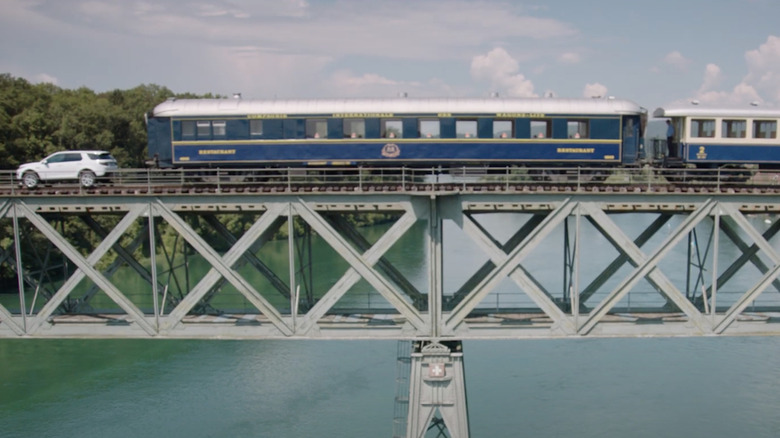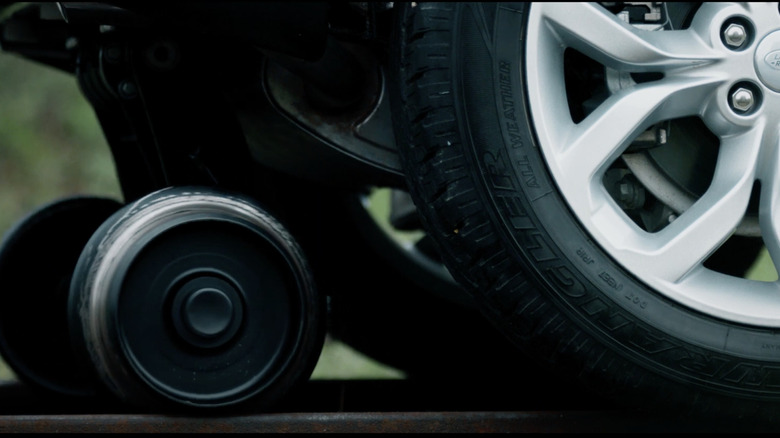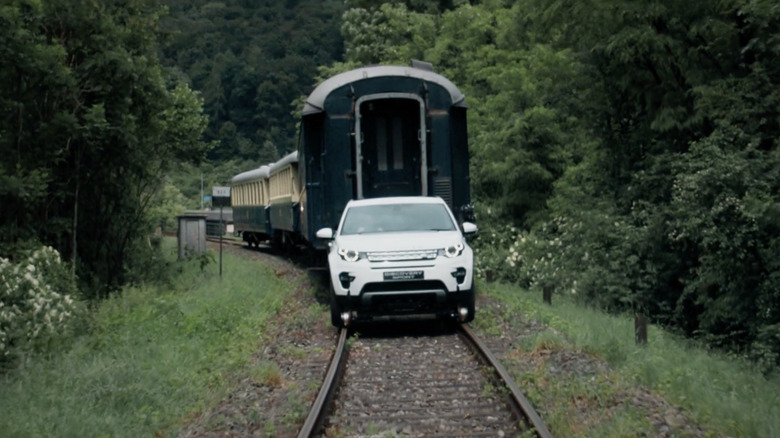Yes, A Land Rover Can Really Pull A Train (Even One That Weighs 100 Tons)
It sounds like the start of an outlandish bar story: someone swears they saw a Land Rover towing a train. Not a toy one, either, a real 100-ton train. But this isn't urban legend or CGI magic. In a daring demonstration in 2016, Land Rover took its compact Discovery Sport SUV and hooked it up to three rail cars, sending it down a 10-kilometer track in northern Switzerland. The train weighed in at a whopping 100 metric tons, or 238,000 pounds, while the vehicle was impressively a mostly stock production model, save for a set of rail wheels bolted underneath.
While the Discovery Sport's rated towing capacity sits at a modest 4,409 pounds, just over two tons, this stunt had it dragging more than 50 times that. The key players here weren't brute horsepower or supercharged mods, but smart engineering and confidence in the brand's DNA. With a 2.0-liter Ingenium turbodiesel engine putting out 180 hp and 317 lb-ft of torque, and Land Rover's Terrain Response system optimizing traction, the SUV did what no one reasonably expected it could do: pull a literal train, on real tracks, without breaking a sweat.
Sure, it was a stunt — but it wasn't a one-time stroke of luck either, as Land Rover backed it up by towing 110-ton Aussie Road Train across the Outback. Clearly Land Rover wanted to show that beneath the polished cabin and compact size, the Discovery Sport still carries the same spirit that once took Series I Land Rovers across deserts and jungles, and in this case, apparently, across train tracks.
A high-tech stunt with old-school grit
The craziest part about all of this is that the Discovery Sport didn't need much tweaking to pull this off. No engine swaps. No retuned ECU. Engineers only added a set of rail-compatible guide wheels, basically stabilizers, so the tires could stay on track. Everything else was standard kit. That includes its nine-speed automatic transmission, diesel powertrain, and electronic drive aids like All Terrain Progress Control, Tow Assists, and a low-range transfer case. If this all sounds like an off-road feature list, that's because it is, and Land Rover used it in one of the least off-road places imaginable.
The secret sauce was torque and traction. Diesel engines don't chase the rev limiter, they dig deep early in the rev range, which is what you want when you're moving massive weight from a standstill. The Discovery Sport's 317 lb-ft of torque came into play here, along with the Terrain Response system that adjusted throttle, brakes, and traction control for optimal grip on steel. It was slow and steady, but steady wins the... train haul.
What's more impressive is how composed the Disco Sport remained through the stunt. There was no wheel spin, it didn't overheat, and no dashboard warnings (surprisingly) begging to stop. Instead, the Landy complied with the instructions, moving rather methodically along the tracks as if it was built for it. It's a fun reminder that some modern SUVs still have that old-school utility and capability underneath the polished facade, despite most of the time being pavement princesses and mall crawlers.
Why stunts like this still matter
Some may see this as a flashy marketing trick, and sure, there's spectacle sewed into it. But the message behind the metal is this: capability matters, even if most buyers won't ever need it to this extreme. The Discovery Sport is marketed as a family SUV made for school runs, weekend road trips, maybe a ski lodge now and then. But stunts like this help distinguish Land Rover in a crowded crossover segment. It's not just about touchscreen infotainment and soft-close doors, it's about reminding drivers that capability is more than a spec sheet.
More importantly, it adds credibility to Land Rover's pitch. When the brand says its vehicles are designed for more than city streets, here's proof. The Discovery Sport pulled 100 tons. It didn't crumble. It didn't need reinforcements. It just did it. For a stunt like this, one would have automatically assumed when comparing the Discovery family and the Defender family, Land Rover would have opted for the old-school brute force of a Defender. Again, proving the brand's credibility.
It's not unprecedented either. Other automakers have tried similar headline-grabbing feats, like Porsche towing a jumbo jet with a Cayenne. But where some stunts feel engineered for the 'Gram, this one had a raw simplicity. One SUV. Three rail cars. Just grip, torque, and Land Rover DNA.


